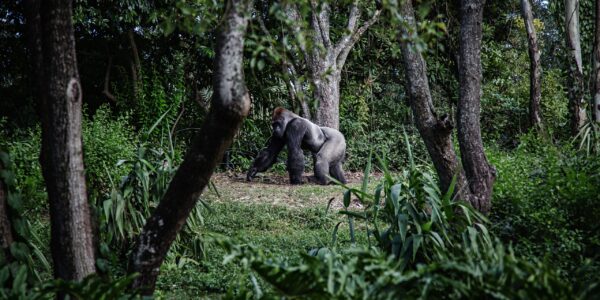Just like water and minerals, the world’s biodiversity is a natural resource and unique to many countries. Biological diversity is important for society in many ways: economic, ecological, recreational, cultural and scientific activities rely on biodiversity. While plants and animals are the most obvious sources of biodiversity, microorganisms are an integral part of ecosystems and actually make up a largely untapped genetic resource. Various industries use the genetic diversity found in microbes for novel medicines and natural compounds, for industrial processes, to produce enzymes, for waste-water treatment and for food production. The introduction of the Nagoya Protocol* in 2010 has had a large impact on how industry works with genetic biodiversity.
In recognition of the commercial potential and value of biodiversity, the Nagoya Protocol was adopted in 2010 to clarify the legal situation and provide transparency for users and providers of genetic resources. After coming into effect in 2014, it has been ratified by 128 countries. The Protocol has three main aims:
- Create incentives to conserve biological diversity
- Sustainably use biological diversity
- Enhance the contribution of biological diversity to sustainable development and human well-being
The Nagoya protocol requires countries to put legislation in place regarding how biological diversity is accessed and shared with others, including how benefits are to be shared amongst different parties. It establishes a “sovereign right” to genetic resources, that is, each country has a right to fully utilize the resources found in their country.
 The process has three stages. First of all, consent must be obtained before genetic resources are obtained from a particular country. Secondly, terms for accessing and using the genetic resources must be agreed upon. And finally, how the benefits from genetic resources will be shared between the countries must be put in place. Benefits can relate to sharing profits obtained from using genetic resources, or can be non-monetary and include scientific collaboration, technology transfer support and joint ownership. Provision is made for countries to promote the conservation of genetic resources and share knowledge between users of resources.
The process has three stages. First of all, consent must be obtained before genetic resources are obtained from a particular country. Secondly, terms for accessing and using the genetic resources must be agreed upon. And finally, how the benefits from genetic resources will be shared between the countries must be put in place. Benefits can relate to sharing profits obtained from using genetic resources, or can be non-monetary and include scientific collaboration, technology transfer support and joint ownership. Provision is made for countries to promote the conservation of genetic resources and share knowledge between users of resources.
What does this mean for users of “genetic resources” from microorganisms?
The Nagoya Protocol helps to conserve genetic resources for the future and share the benefits in a fair and responsible manner. For users of genetic resources from microorganisms, such as national and commercial strain banks, industry and research, the Nagoya Protocol has added an extra layer of documentation to the microbial strain curation process. The Nagoya Protocol is only applicable to genetic material collected after the Nagoya Protocol was implemented on 12 October 2014. However, this means that the collection date and location of the entire collection must be fully documented to ascertain whether the Nagoya Protocol applies to each strain. Culture curators must conduct a thorough compliance testing of their collection to ensure that certain minimal information is present to guarantee that the requirements of the Nagoya Protocol can be met for the entire collection. Retroactively making an entire strain collection compliant with the Nagoya Protocol adds a significant burden of documentation to culture curators. When strain collection data cannot be identified, part of a collection could conceivably be made unavailable for use as a precaution. For strains collected after the implementation date, assessing what documentation is required can be complex, especially when strains in a collection have been obtained from countries that have not yet ratified the Nagoya Protocol, or when there are marked differences between how the Protocol is implemented in different countries. For genetic resources that require prior informed consent and a mutual agreement of the terms of its use, a robust system of documentation must be in place to ensure that the Protocol’s stipulations can be met by end users, now and in the future. Using the strains collected can be complicated due to differences between countries regarding how the genetic resource may be used and how the benefits should be shared with the sovereign nation .
As Derek Butler, Commercial Director at BaseClear, explains “The Nagoya Protocol affects the way-of-working for biotech companies doing biological mining of microbial strain collections. The origin of the strain affects the way it may be used.”
The Nagoya protocol makes it clear what is required going forwards. The difficulties arise from the responsible use of large strain collections found in government, industry, research and commercial strain banks. For example, Hurtado-Ortiz and co-workers at the Institut Pasteur, which houses the largest bacterial strain depository in France, reported that around one third of the 15,000 strains in their bacterial strain collection did not contain essential information including the date and location of collection. This information is needed to prove that legacy strains have been obtained prior to the implementation of the Nagoya Protocol. When the Institut Pasteur workers attempted to contact providers of the strains for the missing information, three quarters were able to be contacted and could provide information about when and where the strain was collected. Uncertainty regarding a strain’s collection date could hamper their use.
The future of microbial genetic resources with the Nagoya Protocol
A seismic shift has occurred in response to the Nagoya Protocol. Users of microbial genetic resources must now consider the origin of their strains and how that may impact their use in future. In addition to careful assessment of the potential benefits of strains, companies, academia and government must implement careful documentation and strain collection procedures to ensure that they remain in compliance with the regulations. The onus is on the end-user to check that the Nagoya Protocol is being adhered to.
For BaseClear, this has led to an increase in demand for their strain characterisation services. “In response to the Nagoya Protocol, biotech companies are looking build their strain collections with microorganisms that are 100% compliant with the Nagoya Protocol” says Butler. “These new strains selected from a documented origin with full consent and mutual agreements put in place are undergoing genomic testing to unlock their potential.”
The Nagoya Protocol has provided a needed legal framework to guide the collection, use and sharing of benefits of genetic resources. While there have been challenges for industry, the Protocol will ultimately help to preserve biodiversity and help safeguard them for future generations.
*The full name is: Nagoya Protocol on Access to Genetic Resources and the Fair and Equitable Sharing of Benefits Arising from Their Utilization.
Experts Meeting on DISCOVERY OF NOVEL MICROBIAL STRAINS & tHE iMPACT OF THE NAGOYA PROTOCOL
Register now for our next online experts meeting on “Discovery of Novel Microbial Strains and the Impact of the Nagoya protocol“ on November 24th, 2020. In this meeting experts from the Centre for Genetic Resources, DSM Nutritional Products, WUR, SINTEF and BaseClear will share their knowledge and insights on how the Nagoya protocol influences the discovery and industrial use of microbial strains. In addition the reclassification of the genus Lactobacillus is discussed, including the impact this has on commercial use and regulatory aspects of these strains.
Sign up now!
References
Related items

 The process has three stages. First of all, consent must be obtained before genetic resources are obtained from a particular country. Secondly, terms for accessing and using the genetic resources must be agreed upon. And finally, how the benefits from genetic resources will be shared between the countries must be put in place. Benefits can relate to sharing profits obtained from using genetic resources, or can be non-monetary and include scientific collaboration, technology transfer support and joint ownership. Provision is made for countries to promote the conservation of genetic resources and share knowledge between users of resources.
The process has three stages. First of all, consent must be obtained before genetic resources are obtained from a particular country. Secondly, terms for accessing and using the genetic resources must be agreed upon. And finally, how the benefits from genetic resources will be shared between the countries must be put in place. Benefits can relate to sharing profits obtained from using genetic resources, or can be non-monetary and include scientific collaboration, technology transfer support and joint ownership. Provision is made for countries to promote the conservation of genetic resources and share knowledge between users of resources.

